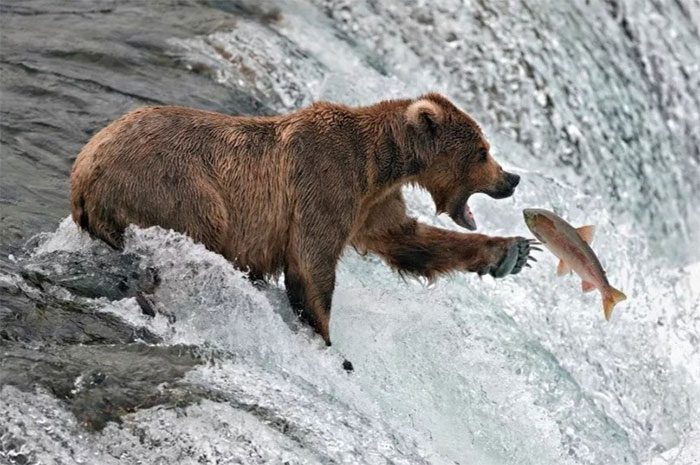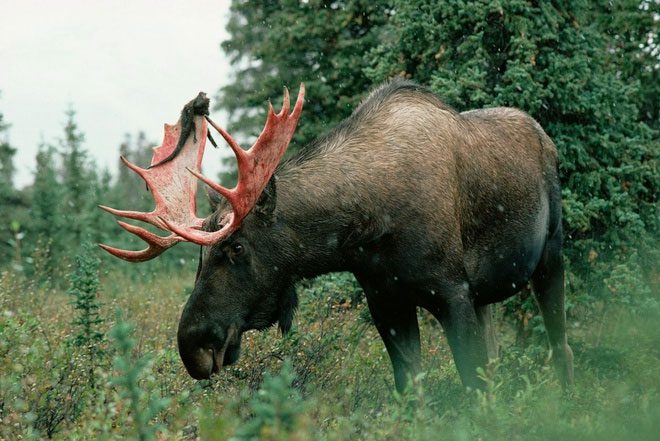A study has revealed that the total biomass of wild mammal species has decreased by 20 million tons over the past two years, now accounting for less than 10% of the total biomass of humans.

Brown bear hunting salmon in Alaska. (Photo: Advnture).
Scientists at the Weizmann Institute of Science in Israel published a study this month. The research indicates that the total biomass of terrestrial mammals currently living is over 22 million tons, compared to the total biomass of humans at 390 million tons.
The research team noted that this discrepancy serves as a warning that the habitats of wild creatures are gradually shrinking, the Guardian reported on March 18.
Ron Milo, the lead researcher, believes that the idea of Earth as a planet filled with vast plains and forests teeming with wildlife is now far from reality.
“When watching documentaries about the animal world, such as scenes of wildebeest migration, one might easily conclude that wild mammals are thriving. That is a mistake,” he said.

Moose shedding velvet. (Photo: National Geographic).
“Their total biomass is less than 10% of the total biomass of humans. If we add livestock that serve humans, the figure increases by 630 million tons. This means it is 30 times that of wild animals,” the study’s author stated.
Calculations indicate that two years ago, the total biomass of wild mammals was 50 million tons. This suggests that the crisis facing wildlife is progressing faster than initially assessed.
Researchers mentioned that they will continue to evaluate the decline in biomass of wild animals over the past 100 years.
The total biomass of aquatic mammals is not significantly different, at approximately 40 million tons.


















































